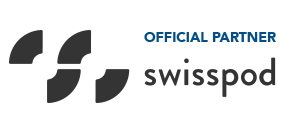Resources
M0
Cash in circulation; only used by the UK.
M1
Cash in circulation plus demand deposits at commercial banks.
M2
Includes demand deposits, time deposits and money market mutual funds, excluding large CDs.
M3
M2 plus large time deposits, repos of maturity greater than one day and institutional money market accounts.
M4
M2 plus negotiable CDs.
MACROECONOMICS
Analysis of a country's economy as a whole.
MAINTENANCE MARGIN
The minimum margin which an investor must keep on deposit in a margin account at all times for of each open contract.
MARGIN
Difference between the buying and selling rates; or the initial deposit made brokerage firm upon establishing an account.
MARGIN CALL
A demand for additional funds to be deposited in a margin account to meet margin requirements because of adverse price movements.
MARGINAL RISK
The risk that a customer goes bankrupt after entering into a forward contract.
MARK UP
The difference between the lowest current offered price and the higher price that a dealer charges to a customer.
MARKED-TO-MARKET
An arrangement whereby the profits or losses on a futures contract are settled each day.
MARKET AMOUNT
The conventional amount dealt between banks.
MARKET IF TOUCHED (MIT)
An exchange order that automatically becomes a market order if the specified price is reached.
MARKET MAKER
A brokerage company or a bank that maintains a firm bid and ask price and is ready, willing, and able to buy or sell at publicly quoted prices.
MARKET ON CLOSE (MOC)
An exchange order that is filled as close as possible to the close.
MARKET ORDER
An order to buy or sell a financial instrument immediately at the best possible price.
MATIF
Marche a Terme International de France.
MATURITY DATE
The last trading day of a futures contract.
MEDIUM TERM NOTE
A corporate debt instrument that has maturity bands of: 9 months to 1 year, more than 1 year to 18 months, more than 18 months to 2 years, etc., up to 30 years.
MICRO ECONOMICS
The study of the behavior of small economic units such as individual consumers or households.
MIDDLE OFFICE
The group of employees responsible for calculating profits and losses and for managing risks.
MID-PRICE
The average of both buying and selling prices.
MINE
Expression used to indicate that the willingness to buy at the rate offered by the counter party.
MINIMUM PRICE FLUCTUATION
The smallest increment of market price movement possible.
MINIMUM RESERVE
Reserves required to be deposited at central banks by commercial banks and other financial institutions.
MIO
Traders' reference for a Million.
MM
Money Markets.
MODERN PORTFOLIO THEORY
Principals underlying the analysis and evaluation of rational portfolio choices based on risk-return trade-offs and efficient diversification.
MOMENTUM INDICATORS
Indicators used in market analysis to quantify the momentum of upward and downward price movements.
MONEY MARKET
Market for short-term debt securities with maturity of one year or less and often 30 days or less.
MONEY SUPPLY
The total supply of money in circulation in a given country's economy at a given time.
MOVING AVERAGE
Moving averages are used on charts to that show whether an instrument's price is trending up or down. It is a technical analysis term meaning the average price of an instrument over a specified time period, used in order to spot pricing trends by flattening out large fluctuations.
MUTUAL FUND
An open-ended fund operated by an investment company that raises money from shareholders and invests in a group of assets in accordance with a stated set of objectives.





 ICM Limited (Abu Dhabi, UAE) is regulated and authorised by the Abu Dhabi Global Markets (ADGM) Financial Services Regulatory Authority (FSRA) registration number: 210045.
ICM Limited (Abu Dhabi, UAE) is regulated and authorised by the Abu Dhabi Global Markets (ADGM) Financial Services Regulatory Authority (FSRA) registration number: 210045. ICM Capital Limited (MU) is regulated and authorised by Financial Services Commission of Mauritius under license number: C118023357.
ICM Capital Limited (MU) is regulated and authorised by Financial Services Commission of Mauritius under license number: C118023357. ICM Capital (Labuan) Limited is regulated and authorised by Financial Services Authority of Labuan under license number: MB/18/0029.
ICM Capital (Labuan) Limited is regulated and authorised by Financial Services Authority of Labuan under license number: MB/18/0029.
 ICM Capital SA (Pty) Ltd is a licensed Financial Services Provider, regulated and authorised by the Financial Sector Conduct Authority (FSCA) of South Africa FSP: 53234.
ICM Capital SA (Pty) Ltd is a licensed Financial Services Provider, regulated and authorised by the Financial Sector Conduct Authority (FSCA) of South Africa FSP: 53234. ICM House AG (Zurich, Switzerland) is licensed under the supervision of ARIF registration number CHE-497.911.976.
ICM House AG (Zurich, Switzerland) is licensed under the supervision of ARIF registration number CHE-497.911.976.